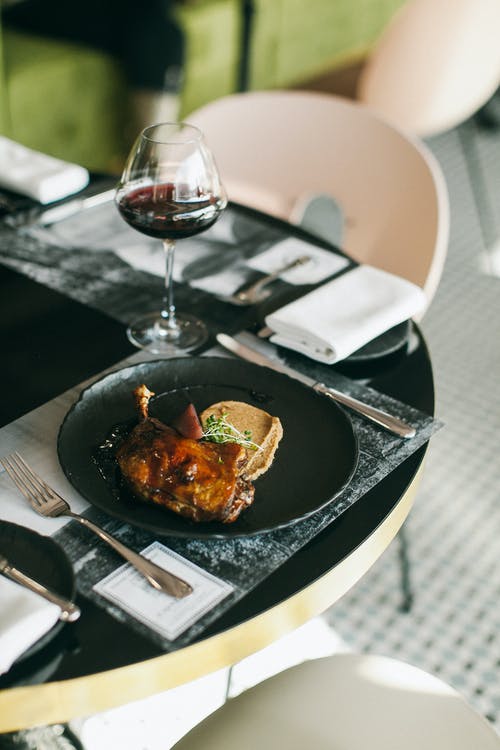Contrary to popular belief, food and wine matching is not an arcane art. Just like anything else, there are a few basic principles to adhere to, and once you get familiar with these, you can get properly creative.
Indeed, wine pairing needn’t be an intimidating affair reserved for sommeliers and connoisseurs. In fact, it’s an accessible art that can transform an ordinary meal into something quite extraordinary. Whether you’re hosting a dinner party or simply enjoying a weeknight supper, understanding a few fundamental principles about how flavours interact can elevate both your food and wine to delightful new heights. The beauty lies in experimentation—sometimes the most unexpected combinations create the most memorable experiences.
It’s important, too, to remember that pairing food and wine is a matter of taste; and if you trust your palate, nose and instincts, you can pick a wine to go with almost any meal. Or, in some cases, a meal to go with any wine! Let’s explore further…
Use The Wine’s Acidity As A Guide
Acidity is the backbone of any wine and holds the flavours together. If your food is overly acidic, it can make the adjacent wine taste flabby and oily if not paired thoughtfully.
Highly acidic foods such as tomato based dishes or Southeast Asian salads need to be matched with crisper wines (to judge the acidity or other characters of wine, check out our piece on tasting wine) to counteract that acidity.
Accompanying an oily or fatty dish, such as fish and chips or a roast pork belly, with a high acidity wine, can ‘freshen up’ a meal, cleansing the palate and making both much more enjoyable.
Some of our favourite wines in the ‘crisp’ category include a Chin Chin Vinho Verde with its subtle effervescence, and a Greywacke Sauvignon Blanc, known for its zesty freshness.


Match The Body Of The Food With The Body Of The Wine
This is a difficult one, as the quality is a difficult one to describe, but generally speaking, ‘body’ is defined by how rich and heavy a wine both tastes and feels in the mouth. A viscous, thick wine in the mouth would be considered full-bodied, whilst a light-bodied wine would be light, crisp and refreshing. The alcoholic content usually follows suit, with full-bodied wines clocking in at over 13.5% whilst those that are light-bodied knock around the 12.5% region.
For a salad with little in the way of protein, a crisp, light bodied white wine like made with the Pinot Grigio or Riesling grape variety generally works well. Add a tuna steak (and the subsequent body that brings to the salad), and you might want to move into rosé territory – a Cote de Provence rosé’s minerality boasts a little more body and matches a niçoise salad adeptly, for instance.

Let’s go further; that aforementioned rosé or the ’roundness’ of a Chardonnay, equally, may hold up more eloquently to cream-based fish dishes and poultry, and at the other end of the spectrum, a heavy steak pairs beautifully with a bold, full-bodied red like an almost inky Argentinian Malbec.
Finally, rich, assertive blue cheese can only be truly matched by a sweet wine – luscious dessert wines like Sauternes from Bordeaux or a quality botrytized wine are particularly triumphant matches for strong cheese. Not only can this wine be enjoyed at the end of the meal with a dessert or a board of cheeses, but it can plays off well with savoury dishes such as Peking duck or freshly sauteed scallops with truffle and pear.
The lesson here, perhaps, is that one wine can be the ideal match for more than one dish. In other words, it’s a good idea to consider the ‘weight’ and heartiness of your food and match it to the appropriate ‘body’ of your wine.
Sweetness Matches With Sweetness, But Also With Salt & Spice
Many people turn their noses up instinctively at sweet wines, but a dash of sweetness is required to complement a variety of flavours. If the food is sweet, a wine needs sweetness to make it seem balanced alongside the food. Salty and spicy flavours are also strongly enhanced by sweetness – just think coconut or mango with a curry, or apple sauce with salty pork.
Speaking of food that pairs well with spice, the distinctive complexity of traditional biodynamic Georgian wines (a Lagvinari Rkatsiteli 2019 is a favourite) is a gorgeous match for dishes from Lebanon, Turkey and Greek that are heavy on the dried spice.
When it comes to sweet snacks and desserts, the general rule of thumb when it comes to wine is to make sure it’s sweeter than the food. If you’re having some popcorn coated in caramel, then consider a Moscato or Riesling, for instance. When looking to buy Riesling online, keep in mind terms like ‘off-dry’ or ‘halbtrocken’ to find options with just the right level of sweetness for your spicy or salty dishes.

Fight Tannins With Protein
The tannins in a wine can give it structure and body, but they can sometimes be unpleasant and totally dominate the flavour of both the wine and your food.
By matching a tannic wine (a Barolo from the Piedmont region of Italy is as good as it gets in this category) with a protein heavy meal such as roast rib of beef or a cheese platter, the tannins soften in the mouth and the wine develops a luxurious texture, as well as making the meat feel more tender and its flavour more pronounced.
Think Of Classic Food Matches & Extend Them To Wine
You already know more than you think. Turkey and cranberry, pork and apple, fish and lemon – these all are flavour matches that we know about and can be applied to matching a wine. An appley Riesling or Chardonnay will work well with roast pork, a citrus-dominated Sauvignon will complement steamed white fish, and a ‘cranberryesque’ Pinot Noir will match with a Christmas turkey. It’s simple when you think about it!

Consider The Cooking Method
How you prepare a dish can dramatically influence which wine will complement it best. Grilled or charred foods develop smoky, caramelised flavours that pair wonderfully with oak-aged wines like a robust California Chardonnay or a Spanish Tempranillo. Poached or steamed dishes, with their more delicate profiles, often match better with unoaked, lighter wines such as Albariño or Grüner Veltliner. Slow-cooked dishes with deep, developed flavours call for wines with similar complexity—perhaps a mature Bordeaux blend or an aged Rioja Reserva. Understanding how your cooking method affects flavour can lead to more intuitive wine selections.
Regional Pairings Often Work A Treat
There’s wisdom in the old adage, “what grows together, goes together.” Dishes and wines from the same region have often evolved alongside one another for centuries, creating natural harmony. Consider pairing a Tuscan Bistecca alla Fiorentina with a local Chianti Classico, or Spanish paella with a vibrant Valencian Bobal.
The bright, herbaceous whites of Santorini complement the island’s seafood dishes beautifully, whilst a rich Lancashire hotpot finds its match in a robust English sparkling wine. This approach not only ensures compatible flavours but also provides a cohesive cultural experience that can transport you to distant locales without leaving your dining table.
Read: 10 of the best local dishes and delicacies to try in Santorini

Mind The Sauce, Not Just The Protein
All too often, we focus solely on the main protein when selecting wine, but the sauce or condiment can be the dominant flavour element. A chicken breast served with a creamy mushroom sauce calls for a different wine than the same chicken prepared with a zesty lemon and caper sauce. The former might pair wonderfully with a buttery Meursault, whilst the latter would sing alongside a crisp Picpoul de Pinet. Similarly, a beef fillet served with a rich Béarnaise sauce might prefer a different companion than one served with a peppercorn sauce. Let the most prominent flavour in your dish guide your wine selection, whether it comes from the protein, sauce, or even a strong side dish.
Break The Rules Occasionally
Whilst these guidelines provide a helpful framework, some of the most exciting gastronomic experiences come from breaking conventions. A full-bodied red with fish isn’t always a faux pas—a meaty swordfish steak or tuna served rare can stand up beautifully to a light Pinot Noir. Similarly, a well-chilled Beaujolais can be a delightful surprise with spicy Asian cuisine. Trust your palate and don’t be afraid to experiment with unexpected combinations. Keep notes on what works for your personal taste, and remember that the “perfect” pairing is ultimately the one that brings you joy. After all, wine is meant to enhance life’s pleasures, not become a source of stress or rigid adherence to rules.
Follow these basic principles, and have some fun. These will make sure that your wine complements your food, and you may even discover that perfect match that can seem truly magical.





